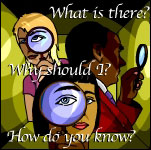cells - the facts
Created | Updated Jan 8, 2003
Cells - The facts by Z Phantom

THE BASICS
a cell is the most basic form of life, it can exist on its own (amoeba's or bacteria) or as part of a larger organism (like humans),
when cells join together for one purpose they form tissues, several (or several million) tissues form a organ (like a liver), and several organs join to form an organism, like humans.
cells can be divided into 2 groups these are:
Eukaryote,
and Prokaryote,
we will look at these later,
these can be sub divided into 4 types:
Plants,
Animal,
Bacteria,
Fungus,
PLANT CELLS
Plant cells ALWAYS have:
A cell wall, A cell (plasma) membrane, a nucleus, a Vacuole, cytoplasm, Ribosomes, rough endoplasmic reticulum, golgi bodies, and mitochondrion. such cells are refered to a "Palisade cells"
CELL WALL
this is the outermost layer of a cell and is made of celulose, this material provides excelent structural stability and is comprised of polysaccharide or carbohydrate polymers, these are made of molecules which join together to form long chains,
A CELL (PLASMA) MEMBRANE
are parts of a cell that consist of layers of phospholipid molecules with some protien molecules between them, this structure is not fixed in place and the position of the protiens can change from moment to moment, such an arrangement is known as a "fluid mosaic structure", this is important because it is the protiens which transport substances across the membrane, thus they are known as "carrier protiens."
THE NUCLEUS
This is the "brains" of the cell, it is the largest organelle in the cell, it is usually spherical and has a diamiter of about 10 millionths of a meter, the cells DNA is stored in the nucleus and it contains all the information to make a new copy of the cell and to controll the cells activities. The Nucleus also produces the RDA that is used to make ribosomes.
THE VACUOLE
This is a large PERMANENT structure in he plants cells, it is used to store substances.
CYTOPLASM
the cytoplasm is a "jelly" like substance where all of the chemical reactions occur in the cell, it takes up the entire cell (except the vaccuole), but is not an organell in itself. it holds the other organells of the cell in suspention and allows easy transport of substances between them.
RIBOSOMES
are very small (20 nm) dense structures that are either attached to an endoplasmic reticulum (ER) or they float freely in the cytoplasm, they use genetic coding to build protiens,
ROUGH ENDOPLASMIC RETICULUM.
is the "roads" of the cell, they collect, store, packages and transports the protiens made by the ribosomes (which are attached to it) throughout the cell.
GOLGI BODIES
acts like the cells liver, it flots in the cytoplasm and recieves packages of protiens and other chemicals, it appears to synthesise or modify these chemicals before their secretion from the cell. can sometimes be mistaken fo ER as they are simmilar in apperance, bur golgi bodies will never attach to the nucleus.
THE MITOCHONDRION
these are round and elongated with a smooth outer membrane and a folded inner membrane, roughly 1 millionth of a meter in size there can be up to 1000 in the cytoplasm of each cell, they act like the power plant for the cell - respiration occurs here.
other features
plant cells may also have (depending upon their location)
CHLOROPLASTS - these are found at a site where photosynthesis takes place e.g. in the leaves, they contain chlorophyll which reacts with light to allow the plant to respire and produce the energy it requires,
ANIMAL CELLS
animal cells vary greatly in size, shape and functions
but they will always have.(with the exception of red blood cells- see below)
A nucleus
A cell membrane,
Mitochondria
Ribosomes,
Rough endoplasmic reiciulum,
Smooth endoplasmic reticulum,
Golgi Bodies,
Cytoplasm,
Lysosome
where already mentioned in "Plant cells" the organells have exacaly the same function in an animal cell,
Smooth endoplasmic reticulum,
has the same function as Rough endoplasmic reticulum,but does not have ribosomes attached.
Lysosome
transport material from the golgi bodies out of the cell.
